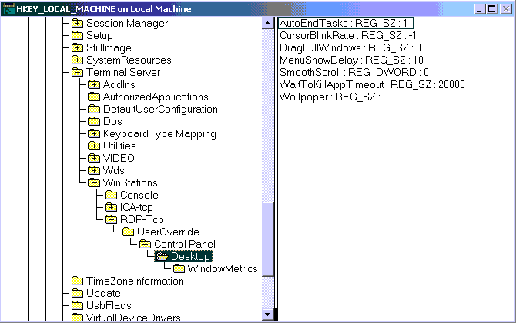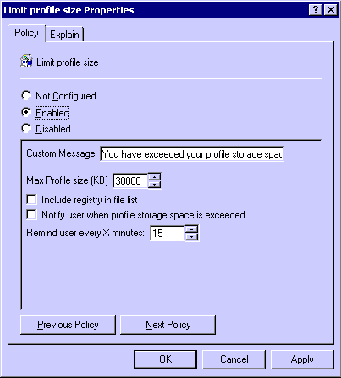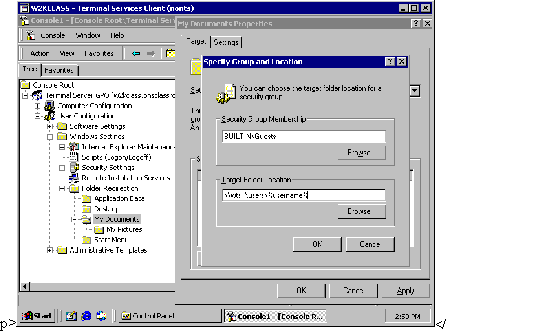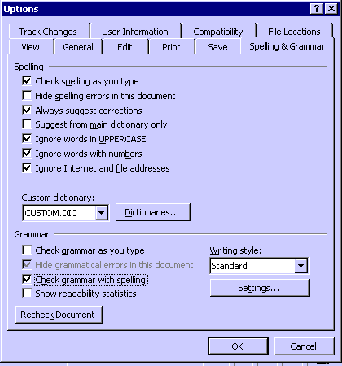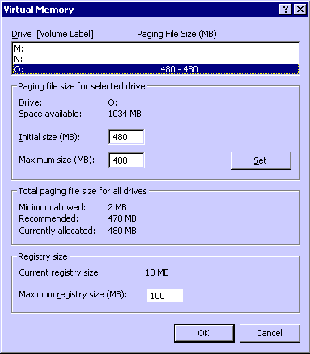|
From CertCities.com
|
||
|
Tips My 10 Favorite Tips for Increasing Windows 2000 Terminal Server Performance Get your registry editor ready and open up Win2K Group Policy! Here's 10 things you can do right now to boost your server performance. by Ron Oglesby 12/18/2000 -- Whether you are new to Microsoft's Windows 2000 Terminal Services or have been around since the idea began with Citrix Systems' Winframe, we are all looking for the same thing: ways to make our servers hummmm. To achieve this is not easy. And to get that extra performance out of your servers is even tougher. Those of us who have been around these multi-user machines for a while know that there are a ton of tricks to help move you into application hosting nirvana. So I am here to let 10 of the technical cats out of the bag, so to speak. These are not unknown tips, and they are by no means the only changes you can make to increase performance, but they are 10 of my favorites. As always, make a system backup and a backup of the registry prior to implementing any of these changes. And always test changes in a non-production environment first. Now that the technicalities are out of the way, let's get started: Tip #1: Set the 2nd Level Data Cache in the Registry
Meaning that you paid good money for the processors with extra cache but the operating system is not using it. In some of Microsoft's Q articles they state no performance increase will be seen from setting this value correctly. Most of us in the industry wonder, "Why have the entry then?" In almost every case I have seen of a server running hot on the processor side, we were able to increase performance by setting this value to the actual size of the cache in K. To do this, open the entry in Regedit or Regedt32 (see Figure 1, below, for instructions) and set this entry to the decimal value of your cache in K. For example, if you have 1 MB worth of L2 cache on each processor this needs to be set at 1024. (NOTE: Do not add up all the processors cache as a total -- it should be the value of cache on the individual processors.)
Tip #2: Disable Paging of the Windows NT Executive But the Win2K system will also page out some of its own kernel code and drivers to the hard disk. Sounds funny, doesn't it? This was originally intended for machines with limited amounts of RAM, allowing the system to free up memory for applications to use. But on a system with at least 128 MB, you can stop this from happening. How does this help you? Servers running as terminal servers tend to have large amounts of RAM (well over 128), and will see an increase in operating system performance by stopping this paging of the Windows Executive. Note that Microsoft articles tend to conflict with each other on this item. In article Q184419, Microsoft states that this may "decrease the response time on systems with large amounts of RAM." Interesting. Compare this to its "Instant Rules of Thumb for Tuning and Sizing NT Server" paper, where it states the exact same procedure will result in a performance increase on servers with large amounts of RAM. I have almost always seen a performance boost on the operating system side when this is done, and believe it's worth it. To stop paging the NT Executive, set the following registry entry:
Tip #3: Stop Unnecessary Processes from Running in Each User's Session These services or programs commonly load from the Local Machine hive in the registry, meaning that they run for each and every user that logs on. Some come right from Microsoft, like LOADWC.EXE (Web Check for IE), or from Citrix Systems, ICABAR.EXE (the admin tool bar in MetaFrame). They can also be called from the user's start-up folder, or the All User's profile. But their most likely spot is in the registry. Check out the following registry keys.
These are easy. Remove the calls from this location and they are gone for good.
This is a bit trickier. These calls are coming from the user's registry and will need to be removed with a script at user logon. If you catch it before your users have ever logged on, you can make the change to the default user's profile. If not, then I would recommend a simple KIX script or even REGINI.EXE to remove the calls as the users log on. Tip #4: Turn Off the Processing of Unused GPOs
Tip #5: Reduce Amount of Graphical Changes in a User's Session By tweaking/verifying the proper graphic settings, you can increase the end user's application performance. This is done by setting WinStation User Overrides in the following location.
Create a key called "UserOverride" in the connection key you are using. If using Microsoft's RDP over TCP/IP, it would be in the "RDP-tcp" key. If you are using Citrix Systems' ICA protocol over TCP, then the sub-key under WinStations would be "ICA-tcp." In the following examples we are using Microsoft's RDP over TCP/IP and are creating sub-keys under "UserOverride." The first sub-key under UserOverride is "Control Panel\Desktop" with the following registry entries:
The second sub-key is under the newly created "Control Panel\Desktop" and is called "WindowMetrics":
To see a graphical representation of these changes, see Figure 3, below.
Tip# 6: Ensure Profile Size and Stability First, let's limit the profile size with a group policy. You don't want to get crazy and restrict the profile size to 10K or anything like that, but using a policy to limit the size of the profile to five or 10 MB would not be out of hand at all. In Win2K this can be accomplished through the Group Policy Object (GPO) attached to the Users OU or the Terminal Server's OU. Access the GPO through the MMC. You will find the Limit Profile Size option under User Configuration, Administrative Templates, System, Logon/Logoff. Enable this object and set your size limitation in KB (see Figure 4, below).
With the profile limited in size we now need to keep applications such as IE, Word 2000 and others from writing/saving information there. In Win2K, a GPO will allow you to redirect the user's My Documents folder. This is where most of your users will save their documents and is the default location for Microsoft Office products. This change is a must for profile stability and will help to keep documents, spreadsheets and other files in their home directory and out of their profile (callout). By accessing the GPO we can make this change under User Configuration, Windows Settings, Folder Redirection. Here you should enable the My Documents and Application Data objects and set their paths to a UNC that matches the location of the user's home directories (see Figure 5, below). The settings for these objects will even allow you to move their current folders out of their profile and into the new location.
For Internet Explorer, we need to redirect the temporary Internet files to a directory on the local Terminal Server. I find it easiest to set the user's IE cache location by editing the default user's profile on the Win2K Terminal Server prior to users logging on for the first time. But in larger environments or on servers that the users already have established profiles, this may be accomplished at login by using a script. I prefer KIXtart or WSH scripts for this purpose, but third-party vendors such as Script Logic (www.scriptlogic.com) can provide a GUI based application to make this easier. To edit the Default User's profile prior to the log on, use regedt32.exe and load the Default User's ntuser.dat as a hive (found in the Documents and Settings directory on the system drive). The entry that needs to be changed to redirect the cache is located in the following registry key.
Once the value is changed you need to unload the hive so that users can access it again.
Change the default value of this entry to reflect your environment (see Figure 6, above). I use %systemdrive%\Inettemp in my installations, but this can be changed to reflect your needs. Using the system drive variable will create a directory on the local machine where all temporary Internet files will be stored The directory should have permissions set so users can read and write to it and a schedule should be set up to delete these files on a regular basis. Changing this to a fixed directory on the machine instead of their home directory will accomplish a couple of things. First, it will keep these temporary files out of the user's profile. Second, it will keep the files out of the Home Directory and help to reduce the space used by home directories. This way you are killing two birds with one stone. Other applications tend to write their info into the profile also. These applications will need to be looked at on a case-by-case basis to determine the following:
If the information is stored in the registry you will need to track the registry settings with a utility like REGMON (www.sysinternals.com) and make the appropriate changes as specified above. If it is stored in an INI file, you will need to determine if the program is reading a machine or user-specific INI file, and if you can make changes to it. Sometimes, contacting the application vendor for this information can prove extremely useful and help to speed up the process. Tip #7: When Using Office 97 or 2000, Disable Background Grammar Checking I recommend changing these with a script at logon, but you can also make these changes on new installation to the default user so that every new user automatically has them (see Figure 7, below). For Office 97 the registry entry is as follows:
For Office 2000:
Tip #8: Optimize Partition Cluster Size
Tip #9: Increase the SMB Size for Applications that do Copy/Move Functions The maximum value this can be set at is 64K. For most Ethernet environments, a size of around 14k or 14,596 bytes is optimal. Setting this to the maximum of 65,535 bytes is not suggested, however. This setting is located in the registry at:
For more information on the SMB size negotiation, see MS article Q223140. Tip #10: Configure the Page File, Early and Properly For maximum performance, set the page file to two times the amount of RAM and move it off of the OS partition. Moving the page file is done not only for performance reasons but it will also keep that enormous pagefile.sys from crowding your system partition. Imagine trying to fit a 4 GB page file on your current system partition -- Ouch! See Figure 8, below, for instructions:
With your basic NT skills, a good Internet connection, and this list in hand you should be well on your way to terminal services nirvana. Enjoy. Ron Oglesby is the Citrix and Terminal Services team leader at Progressive Network Solutions in Downers Grove, Illinois. When he is not hacking the registry on his Windows 2000 server he is busy trying to finish his computer lab in his basement. He can be reached at . |
||
|
top Copyright 2000-2009, 101communications LLC. See our Privacy Policy. For more information, e-mail . |


